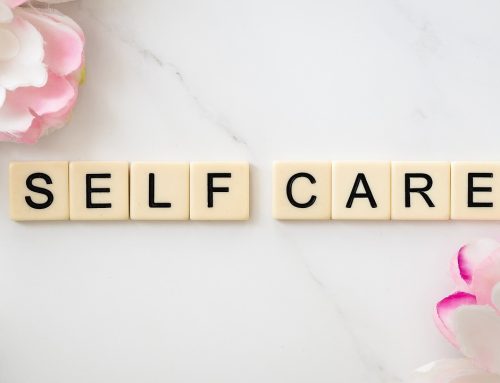Thanksgiving is tomorrow and as such many of us are thinking of what we are thankful for in each of our lives. Good friends, loving family, and good health re: some of the common things that we find ourselves thinking of. So it is this spirit that MINES wants all of us to take a moment and thank the (sometimes thankless) caregivers that look after their loved ones who depend on them, often times sacrificing their own wellbeing in the process. There are countless reasons why one might become a caretaker or need a caretaker themselves but since it is Alzheimer’s awareness month we will focus on those that fall into the Alzheimer’s and dementia circle. About 15.7 million adult family caregivers care for someone who has Alzheimer’s disease or other dementia. [Alzheimer’s Association. (2015). 2015 Alzheimer’s Disease Facts and Figures.]
Unsung (and unpaid) heroes
Given that a large percentage of caregivers are family members or friends of those that they care for, they are rarely paid or reimbursed for any of the time and resources that they spend caregiving. In fact, approximately 43.5 million caregivers have provided unpaid care to an adult or child in the last 12 months. [National Alliance for Caregiving and AARP. (2015). Caregiving in the U.S.] Not only do these folks go unpaid, they are often paying out of their own pocket for supplies, transportation, and lost wages due to missed work in the line of caregiver duty. Alzheimer’s and dementia are already ranked as some of the most expensive medical issues facing the US today, but with personal expenditures and lost wages for caregivers being hard to calculate exactly, this problem might be even worse than what the current stats say.
Who are they?
Despite their superhuman capacity for empathy, caregivers are normal people, and oftentimes do not have any formal caregiving training or background. They also come from just as diverse of backgrounds as that of the people that they care for. Typically, they are adults with the average age being 49.2 years old, with 48% of caregivers falling in between the ages of 18 and 49 years old. About a third of caregivers are older than 65. In terms of ethnicity, according to a 2015 survey, 62% of caregivers identify as White, while 17% identified as Hispanic, 13% as African-American, and 6% as Asian-American. [National Alliance for Caregiving and AARP. (2015). Caregiving in the U.S.]
Women and Caregiving
A very important aspect of the Alzheimer’s/dementia crisis is that women are right at ground zero. Not only do women face a 60% greater chance of getting Alzheimer’s or dementia, but upwards of 75% of all caregivers are female, and may spend as much as 50% more time providing care than males. [Institute on Aging. (2016). Read How IOA Views Aging in America.]
While women account for the vast majority of caregivers, they also make up a large percentage of the individuals being cared for. In fact, 65% of care recipients are female, with an average age of 69.4. The younger the care recipient, the more likely the recipient is to be male. 45% of recipients aged 18-45 are male, while 33% of recipients aged 50 or higher are male. [National Alliance for Caregiving and AARP. (2015). Caregiving in the U.S.] Much of this is due to the fact that Alzheimer’s and many types of dementia tend show up in women a much higher rate than men. Researchers are trying to determine what the reason is behind this. It was once thought that it was because women tend to live longer than men, but as the average life expectancy becomes closer this is being challenged and other factors are being considered.
Who are they caring for?
While many caregivers do so professionally, many make the leap into the role of caregiver in order to care for family or close friends. This group actually makes up the vast majority of caregivers with 85% of all caregivers caring for a relative or other loved one. Of these caregivers 42% are caring for a parent, 15% are caring for a friend or other non-blood related loved one, 14% for a child, 7% for a parent-in-law, and 7% for a grandparent-in-law. [National Alliance for Caregiving and AARP. (2015). Caregiving in the U.S.]
What are they doing?
There is no set job description for caregiving. The day to day tasks vary from one individual to the next depending on the needs of those they care for. It is estimated that 96% of caregivers are charged with assisting or completely taking over normal everyday activities such as shopping, cooking, picking up prescriptions, and so forth which adds up fast, leaving little time for the caregivers’ own needs. [AARP and United Health Hospital Fund. (2012). Home Alone: Family Caregivers Providing Complex Chronic Care.]
According to a recent survey, on average, caregivers spend:
- 13 days each month on tasks such as shopping, food preparation, housekeeping, laundry, transportation, and giving medication;
- 6 days per month on feeding, dressing, grooming, walking, bathing, and assistance toileting;
- 13 hours per month researching care services or information on disease, coordinating physician visits or managing financial matters. [Gallup-Healthways. (2011). Gallup-Healthways Well-Being Index.]
To make matters worse, many of the tasks are complex and often medical in nature. A recent report that talked about caregivers who provide ongoing chronic care, 46% had to perform medical and nursing tasks on a regular basis, sometimes without the ability to obtain proper training to perform the needed tasks. [AARP and United Health Hospital Fund. (2012). Home Alone: Family Caregivers Providing Complex Chronic Care.]
It is important to mention that Alzheimer’s and other dementia related disease call for some of the more intensive and long term caregiving commitment. Measured by duration of care, Alzheimer’s and dementia caregivers provide care on average 1-4 years more than caregivers caring for someone with an illness other than Alzheimer’s disease. They are also more likely to be providing care for five years or longer. [Alzheimer’s Association. (2015). 2015 Alzheimer’s Disease Facts and Figures.]
How can we support them?
Caregivers report having difficulty finding time for one’s self (35%), managing emotional and physical stress (29%), and balancing work and family responsibilities (29%) (NAC, 2004). About 73% of surveyed caregivers said praying helps them cope with caregiving stress, 61% said that they talk with or seek advice from friends or relatives, and 44% read about caregiving in books or other materials (NAC, 2004). If you find yourself close to someone who is providing care for someone and you’d like to help out, keep in the mind the best way that you can help is to stay out of their way and instead go do daily tasks that they do not have time to do themselves such as shopping, picking up kids from school/activities, or offering company when they do get the rare moment to themselves. But remember if they just want to be alone make sure to give them the space they need to unwind.
Thank you!
So with all this in mind it’s easy to see that we should all be thankful to the caregivers in the world. Many people would be suffering even more without the time and personal sacrifices made by these special people every day. So this holiday season everyone at MINES says THANK YOU CAREGIVERS! Thank you for everything you do!
To Your wellbeing,
Nic Mckane
The MINES Team
Sources and Resources:
https://www.caregiver.org/caregiver-statistics-demographics. http://www.caregiving.org/caregiving2015/
http://www.cdc.gov/aging/caregiving/facts.htm, http://www.aarp.org/relationships/caregiving/info-11-2008/i13_caregiving.html











Leave A Comment